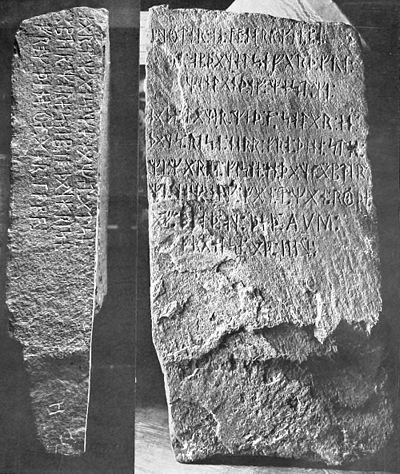AUGUST 3, 2019 – I went to work on my clump of clay:
Jedediah Carson passed by here in the year 1845.
Bobby watched closely. When I finished, he asked, “What should I write?”
I thought a bit and recalled the American Heritage article about the Kensington Runestone—the large stone uncovered by a farmer in rural Douglas County. The mysterious stone was inscribed with runes, and for many years was cited as evidence that via the Great Lakes, Vikings had found their way to what was now Minnesota as early as 1362—the year written among the runes. The part of the inscription that had made an impression on me was, “After we came home we found 10 men red with blood and dead.” That sounded a little melodramatic for our purposes. I told Bobby to write, “We camped out here and got attacked by a bear,” then wrote it down on paper for him to copy.
We put the inscribed clay out on the driveway to bake in the late afternoon sun. I told Bobby we’d have to wait until dusk before placing the “rocks” down at the beach. We wouldn’t want anyone to see what we were up to.
By the time the sun touched the horizon, the clay rocks were as hard as real rocks. I crammed them into my pockets and biked to Bobby’s. Together we rode to the beach and checked to make sure we’d have the place to ourselves.
The coast was clear. Bobby and I scurried down the sand to look for a good spot to bury our rocks. “How ‘bout here?” Bobby said, picking a random spot.
“Wull, maybe,” I said, “but what if it’s crowded tomorrow and someone puts their towel down right over the rocks?”
“Yeah, that wouldn’t be good,” said Bobby.
“I think close to the water and off to the side. People probably won’t lie down there.” Bobby agreed. We dropped to our knees and started pushing sand aside. “We just wanna cover ’em a little bit,” I said. “We don’t wanna bury them so deep we can’t find ’em, but we don’t want someone else to discover them before we do.” To mark the spot I picked up a couple of nearby twigs from the big cottonwood at the top of the beach and stuck them in the sand next to our archaeological site.
© 2019 Eric Nilsson
